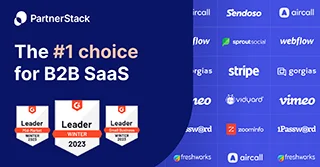Security
Zero-Trust Approach To Your Supply Chain Cybersecurity

Does your business need a zero-trust approach to its supply chain cybersecurity? Reliance to technology makes the answer easy – it’s yes.
The evolution of supply chains over the years has been massively driven by technology. Businesses of all sizes are moving to the virtual space, some compelled by the changes in the last year. While organizations build cybersecurity fortresses for themselves, there are several susceptibilities at touchpoints with suppliers, manufacturers, global partners, and other service providers to consider. Threats are prowling around these parties, waiting to break security with the first occasion.
Supply chain attacks have been a concern for cybersecurity experts for many years, as the chain reaction generated by one mishap can put an entire network of providers at stake. And, according to ENISA, strong security protection is no longer enough for companies when attackers have already focused their attention on suppliers. This is also demonstrated by the cumulative impact of these attacks, such as downtime of the system, reputational damage, and monetary loss.
Attacks on supply chains are now projected to multiply by 4 in 2021 compared to 2020. This new trend stresses the need for the cybersecurity community and policymakers to act now. This means you can no longer simply trust that your seller is cyber secure – you need to verify it? But how?
The Zero-Trust Approach
Rather than assuming that a product or business you are dealing with is secure, a zero-trust approach requires verification for all assets, applications, and user accounts – the authentication for their access to your stem must be agreed upon. It’s a security framework you won’t regret applying.
The zero-trust approach will require all users in or outside the company’s network to be authenticated, authorized, and unceasingly validated for security configuration and position before being given or keeping access to all data and applications. Zero Trust means there is no traditional network advantage; the network can be in the cloud, local, hybrid, or a combination with resources anywhere and employees in any location.
Zero Trust is a way of securing infrastructure and data in today’s digital transformation. It addresses today’s organization’s modern challenges, including ensuring hybrid cloud spaces, remote employees, and ransomware threats.
Your Retailer Might Pay Insufficient Attention to Cybersecurity
The retailer you deal with might overlook something in building its cybersecurity system or undervalue the importance of the secure development of services and products. This may lead you to unknowingly install weak software or expose your business to data leaks in the case of an untrustworthy cloud service provider.
To reduce these risks, you can take these actions:
Compliance
Check your vendor’s compliance with cybersecurity guidelines before accepting its services or signing a contract for software development. Remember to impose liability in the agreement in case of security mishaps.
QA
When outsourcing software development, perform regular quality assurance, especially when updates are available.
Auditing
Hire independent experts to audit the security of the developed products and software.
Security Monitoring
Encourage solutions for ongoing security monitoring of the applications. In the case of a cloud service provider, you should also demand added control mechanisms such as monitoring of sources of entry and session, as well as auditing of sessions.
Your Vendor Might Place Too Much Trust in Other Third Parties
In a multilayer structure, there’s a great chance that your vendor may be working with other third parties and trusting their resilience without verification. But when one of these entities lacks strong cybersecurity means, it could be an entry point into the whole supply chain.
A zero-trust approach will help reduce these risks by:
Access
Demanding secure and confirmed access to all the resources. Reauthentication should be mandatory whenever a user accesses an applicant or cloud storage. In fact, each attempt to access the network is viewed as a threat until the opposite has been proved.
Applying the least-privilege model that limits each user’s right to access the network to the minimum level necessary to perform their duty.
Analyzing the history of events or logs and their sources in your applications and recording irregularities in special software. This will help expose the threats in your system and identify the chain of events after an attack.

You Might Be Contacted by a Criminal Posing as a Vendor
Unsurprisingly, supply chain attacks are the hacker’s new favorite weapon. Because gaining access to an organization that provides software and services to many other companies, it’s a big bonanza for these hacker groups to find a possible way into thousands of targets at once. The potential financial gains from these attacks motivate today’s cybercriminals.
Hackers can easily disguise themselves as trustworthy service providers, which means it’s a matter of time until one of your employees receives a threatening email. Like it or not, corporate accounts continue to be one of the most appealing targets for cybercriminals, and phishing has become a critical method to spread ransomware infection.
Recent findings show that 7 out of 10 sales representatives fall for these tricks. So, even advanced software models may not be enough to secure the organization if workers open the doors to cybercriminals. Demanding awareness and requiring workers to verify all incoming mail can significantly reduce this risk.
Summing Up
Technology drives supply chains, and while it has provided efficiencies, there are more touchpoints for hackers to find a way in and compromise your data. The zero-trust model can substantially increase the resilience of each individual business in a supply chain, improving the stability of these growing networks. By verifying sellers and every other element inside and outside the web, as well as providing regular training in this method to workers, it is possible to overcome this challenge.









